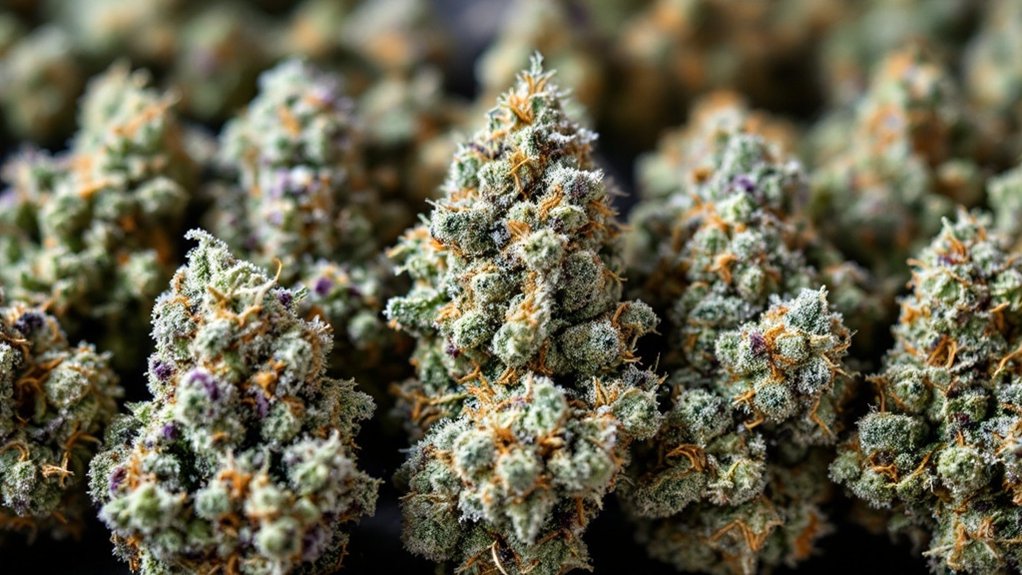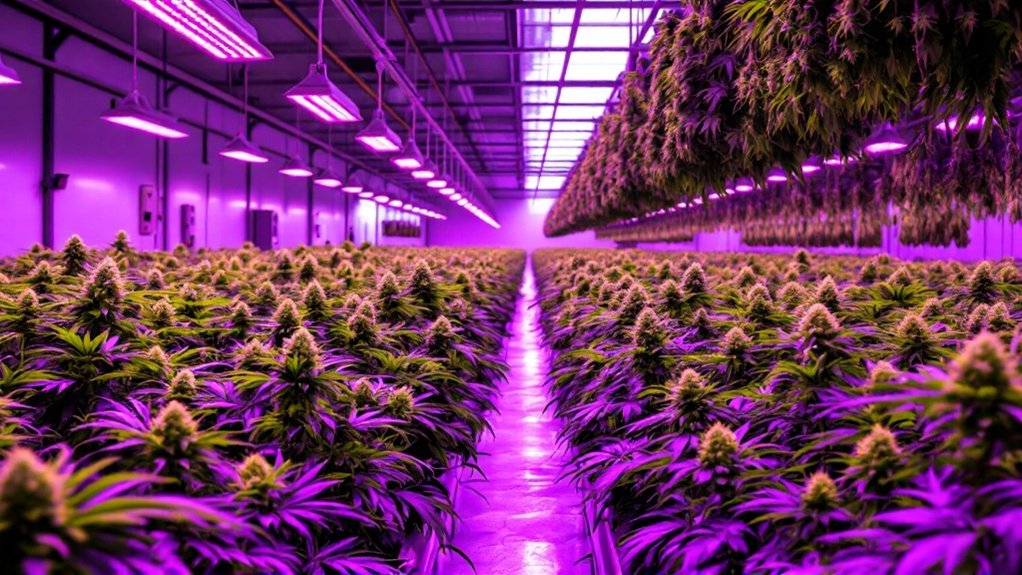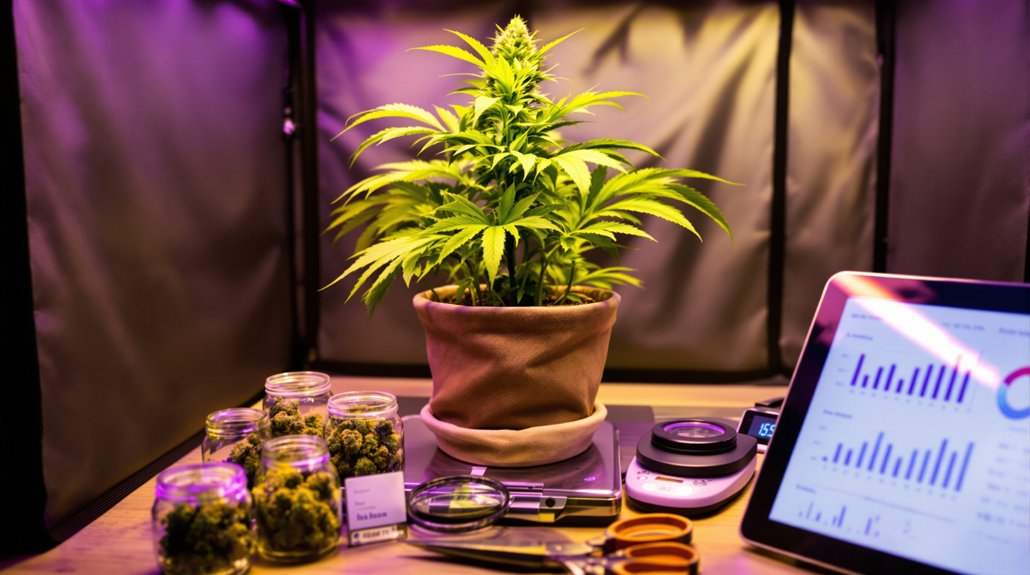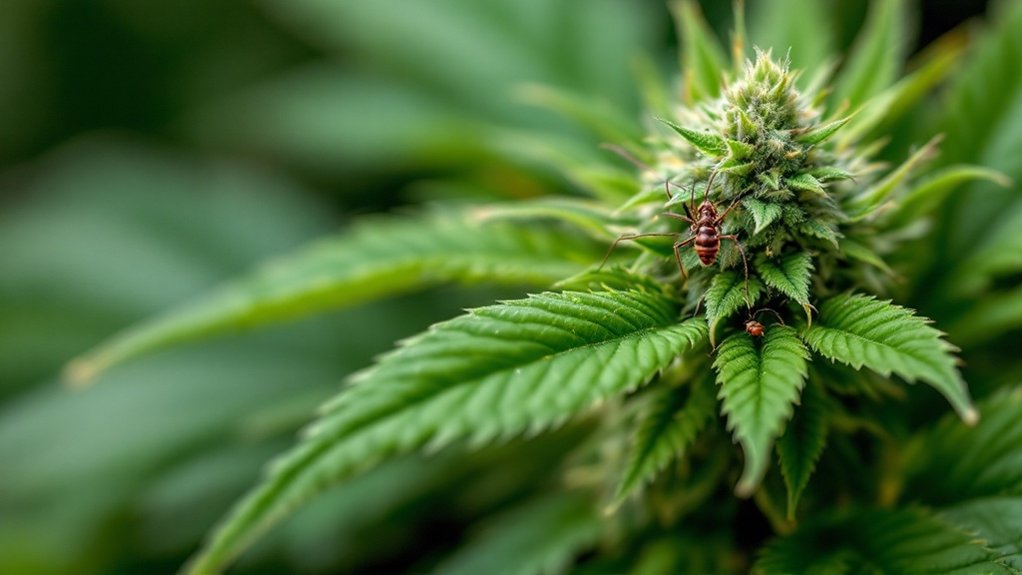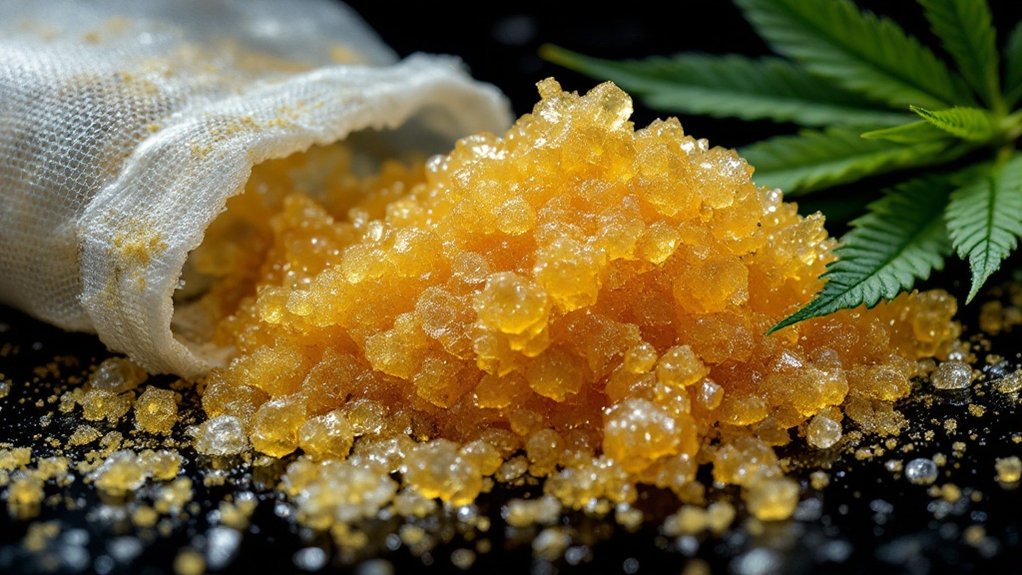Today’s cannabis flower typically contains between 10% and 30% THC, with dispensary products averaging around 20%. Legal market offerings generally exceed illicit market potency, which averages 16%. Premium strains can reach exceptional levels between 29% and 42% THC, with products above 25% considered particularly potent. Modern cultivation techniques and selective breeding have steadily increased THC concentrations over time. The complete picture of cannabis potency involves factors beyond just THC percentage.

As cannabis legalization expands across regions, consumers and researchers have shown increasing interest in understanding the potency profiles of commercially available flower products. The concentration of tetrahydrocannabinol (THC), the primary psychoactive compound in cannabis, has undergone considerable changes over recent decades. Today’s cannabis flower typically contains between 10% and 30% THC, with dispensary products averaging approximately 20% THC content. Experienced consumers often develop higher tolerance levels with regular use, requiring stronger potencies to achieve desired effects. Additionally, the diversity of cannabis strains, including indicas, sativas, and hybrids, contributes to varying THC concentrations and effects.
The legal and illicit markets display notable differences in potency profiles. Legal dispensaries commonly advertise cannabis flower with THC percentages ranging from 20% to 30%, positioning these products as premium offerings. In contrast, the illicit market averages around 16% THC according to the DEA’s 2024 report, though this represents a 29% increase from 2021 levels. This disparity highlights the evolving nature of cannabis potency across different distribution channels.
Historical data demonstrates a marked increase in cannabis potency since the late twentieth century. This upward trend can be attributed to advancements in cultivation techniques, strategic breeding programs, and consumer preference for more potent effects. Modern growing facilities utilize precise environmental controls and specialized nutrients to maximize cannabinoid production, resulting in flower products with consistently higher THC concentrations.
Some exceptional cultivars have pushed the boundaries of THC content. Select strains like “Jenny Kush” have tested between 29% and 42% THC in particular batches, though such extreme potency remains relatively uncommon. Most consumers typically encounter cannabis flower in the 20-30% range, with products exceeding 25% THC considered especially potent. These high-THC varieties represent a smaller segment of the overall market but command premium pricing. It’s important to note that THC is measured by weight in milligrams per gram of product.
Several factors influence the THC content in cannabis flower. Genetics play a fundamental role, with certain strains naturally predisposed to higher cannabinoid production. Growing conditions, harvesting timing, and curing methods also considerably impact the final THC profile. Additionally, market pressures in legal environments have encouraged selective breeding for increased potency, as many consumers use THC percentage as a primary purchasing criterion.
Laboratory testing protocols and regulatory frameworks attempt to standardize THC reporting, though concerns about accuracy and consistency persist across different jurisdictions. While THC concentration remains an important metric, many experts suggest considering the full spectrum of cannabinoids and terpenes rather than focusing exclusively on THC percentage when evaluating cannabis flower quality.
Frequently Asked Questions
How Does THC Percentage Affect the Intensity of the High?
THC percentage directly correlates with the intensity of cannabis effects. Higher concentrations deliver more cannabinoids to receptor sites in the brain, producing stronger and faster-onset psychoactive effects.
The relationship is not strictly linear, however, as individual tolerance, consumption method, and the presence of other cannabinoids like CBD modify the experience.
Regular users typically develop tolerance requiring progressively higher THC percentages to achieve similar effects, while infrequent users may find high-potency cannabis overwhelmingly intense.
Can Lab Testing for THC Percentages Be Inaccurate?
Laboratory testing for THC percentages can indeed be inaccurate.
Research indicates cannabis lab tests typically have accuracy variations of plus or minus 20% between different laboratories. This inconsistency stems from non-standardized testing procedures, variations in calibration processes, and limitations inherent to chromatography techniques when analyzing complex plant materials.
Studies have found approximately 70% of retail cannabis samples tested lower than the THC potency reported on their labels, with some samples containing only one-third of their claimed THC content.
Does Higher THC Content Mean Better Quality Cannabis?
Research indicates that higher THC content does not necessarily equate to better cannabis quality. Studies from Oregon show no correlation between THC percentages and positive consumer experiences.
Quality is better determined by a complex combination of factors including aroma, cannabinoid profile balance, and subjective effects. The industry’s focus on THC content has created a feedback loop between consumer demand and production, despite scientific evidence suggesting that terpene profiles and overall chemical composition contribute more considerably to user satisfaction than THC levels alone.
How Do Consumption Methods Influence THC Effectiveness?
Consumption methods markedly impact THC effectiveness through varying absorption rates and bioavailability.
Inhalation methods like smoking and vaporizing deliver cannabinoids directly to the bloodstream via the lungs, producing rapid effects with higher bioavailability.
Ingestion methods, including edibles, undergo first-pass metabolism in the liver, converting THC to 11-hydroxy-THC, which creates stronger, longer-lasting effects despite reduced bioavailability.
Sublingual administration offers a middle ground, balancing rapid absorption through oral mucosa with extended duration of effects.
